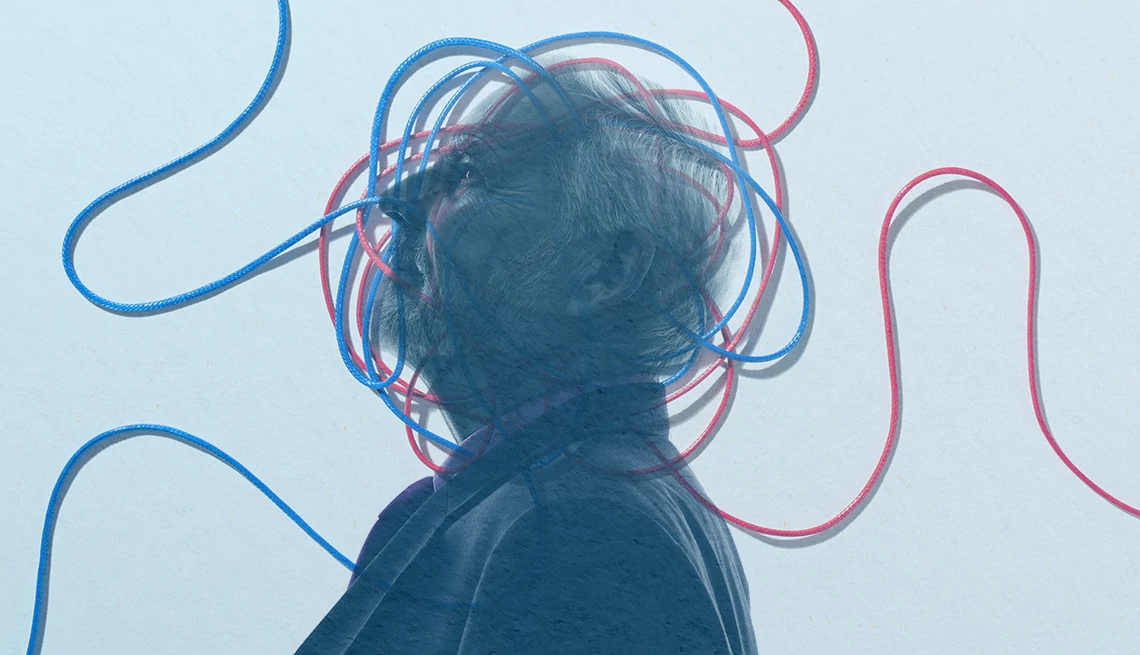Play all audios:
There’s a type of dementia that is named for the specific clumps of protein that aggregate in the brain and cause the damage that leads to changes in cognition, behavior, mood and movement.
It’s called Lewy body dementia, and it is actually an umbrella term for two related conditions: dementia with Lewy bodies and Parkinson’s disease dementia. Both conditions involve abnormal
buildup of a protein called α-synuclein, which is important for communication between neurons. When α-synuclein forms clumps, called Lewy bodies, neurons are damaged in areas of the brain
that affect thinking, behavior, movement and sleep. Patients often have hallucinations or delusions and can experience rapid eye movement (REM) sleep behavior disorder, which involves a loss
of the muscle paralysis that normally occurs during REM sleep. Without the paralysis, a person can move about while dreaming, which can lead to some unsettling situations. About 1.4 million
people in the United States have Lewy body dementia, according to the Lewy Body Dementia Association. It is the second most common cause of neurodegenerative dementia after Alzheimer’s
disease, though it is believed to be vastly underdiagnosed. Most cases occur in people age 50 or older. And it is slightly more common among men than women. The disease is progressive,
meaning it worsens over time. There is no cure or way to slow it down, but treatments are available to help with some of its symptoms. SIGNS AND SYMPTOMS OF LEWY BODY DEMENTIA _The
organizations below can help patients and caregivers learn more and find resources._ LEWY BODY DEMENTIA ASSOCIATION NATIONAL INSTITUTE ON AGING LEWY BODY DEMENTIA RESOURCE CENTER THE
ALZHEIMER’S ASSOCIATION MICHAEL J. FOX FOUNDATION PARKINSON’S FOUNDATION Doctors look for four symptoms of Lewy body dementia, though not all four have to be present: * Fluctuating cognition
or alertness * Visual hallucinations, that is, seeing things that aren’t there * Sleep disorders, such as acting out or vocalizing while dreaming * Parkinson’s-like movement difficulties,
such as stiffness, slowness, tremors, or shuffling walk and falls Lewy body dementia can be hard to distinguish from Alzheimer’s disease. However, Alzheimer’s primarily affects memory,
especially early on, in contrast with Lewy body’s broader range of cognitive symptoms. Lewy body dementia primarily affects executive function (planning, organizing, multitasking),
attention, the ability to judge distance and depth, and navigating. Problem-solving and reasoning also become difficult. People with Lewy body dementia show some memory impairment,
particularly for “working memory” that we all use to keep track of a topic during conversation or during a multistep project such as preparing a meal. However, they generally have less
trouble with recall of recent events or discussions than those who have Alzheimer’s disease. In addition, there can be behavioral and mood symptoms such as depression, anxiety and apathy.
Some people will also have delusions, or false beliefs not based on reality. Other common symptoms include a drop in blood pressure upon sitting or standing, fainting spells, occasional
unresponsiveness, incontinence, constipation or changes in body temperature.

